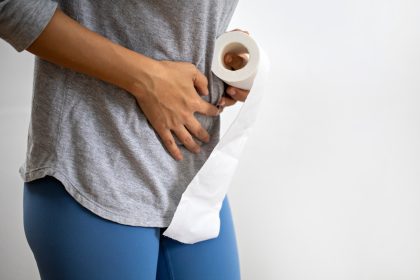Proper laundry care often comes down to small but significant details. While turning underwear inside out before washing might seem trivial, this simple habit can substantially improve both cleanliness and garment longevity. Understanding the science behind this practice reveals why laundry experts consistently recommend it.
The hygiene factor
The inner surface of underwear accumulates body oils, perspiration, and bacteria throughout daily wear. When washed right-side out, these areas may not receive adequate exposure to detergent and water. Turning garments inside out ensures cleaning agents target the surfaces that need the most attention, resulting in more thorough sanitization.
Bacteria and other microorganisms tend to concentrate on fabric surfaces that contact skin directly. Traditional washing methods might not effectively reach these areas when garments remain right-side out, potentially leaving behind residual contamination that could affect skin health and hygiene.
Fabric preservation benefits
Delicate materials commonly used in underwear manufacturing require special care to maintain their quality. The outer surfaces often feature detailed stitching, elastic components, or decorative elements that can deteriorate from direct exposure to washing machine agitation. Inside-out washing helps protect these vulnerable features.
Cotton, silk, and synthetic blends respond differently to washing machine cycles. The mechanical action of washing can cause pilling, color fade, and fabric stress. Reversing garments provides an additional layer of protection for the visible surfaces, helping maintain appearance and structural integrity over time.
Enhanced cleaning efficiency
Detergent and water interaction with soiled areas improves when garments are turned inside out. This orientation allows cleaning agents to work directly on the most contaminated surfaces, increasing their effectiveness. The result is more thorough cleaning with the same amount of detergent and water.
The washing machine’s mechanical action also works more effectively on reversed garments. Water and detergent circulation patterns in modern washing machines are designed to penetrate fabrics from all angles. Inside-out washing takes advantage of these engineering features for optimal cleaning results.
Color and pattern preservation
Printed patterns and dyed fabrics face constant stress from washing machine agitation. Inside-out washing reduces direct friction on these decorated surfaces, helping preserve color vibrancy and pattern integrity. This protection becomes particularly important for dark colors and intricate designs that show wear more readily.
The preservation effect extends beyond aesthetic concerns. Many dyes and printing processes affect fabric structure at the fiber level. Protecting these treated surfaces helps maintain the material’s original properties, including stretch, recovery, and moisture-wicking capabilities.
Practical implementation
Temperature considerations
While inside-out washing provides multiple benefits, water temperature remains crucial for optimal results. Warm water effectively removes body oils and bacteria while being gentle enough to protect most fabrics. Hot water, though more sanitizing, can damage elastic components and accelerate color fade.
Detergent selection
Choose mild detergents formulated for delicate fabrics. These products clean effectively while minimizing residue buildup that can irritate skin. Avoid fabric softeners on moisture-wicking materials, as they can compromise the fabric’s functional properties.
Drying techniques
Air drying inside-out garments helps prevent elastic damage from high dryer temperatures. This method also reduces static cling and helps maintain fabric structure. If machine drying is necessary, use low heat settings and remove items promptly to prevent wrinkles.
Long-term care benefits
Consistent inside-out washing extends garment lifespan through multiple mechanisms:
- Reduced mechanical stress on outer surfaces
- Better preservation of elastic components
- More effective removal of body oils that can degrade fabrics
- Improved maintenance of shape and fit
Professional perspectives
Laundry experts and textile manufacturers increasingly recommend inside-out washing for intimate apparel. This practice aligns with professional care standards while being easy to implement in home laundry routines. The technique has gained support from both hygiene specialists and fabric care professionals.
Environmental impact
This method’s efficiency in cleaning and preserving garments contributes to sustainability efforts. Longer-lasting clothing means less frequent replacement and reduced textile waste. Additionally, more effective cleaning often requires fewer rewashing cycles, saving water and energy.
Moving forward
Incorporating inside-out washing into regular laundry routines represents a simple yet effective improvement in garment care. This practice balances thorough cleaning with fabric preservation, ultimately leading to better hygiene and longer-lasting clothing. As with many aspects of clothing care, small adjustments in technique can yield significant long-term benefits.
This story was created using AI technology.















